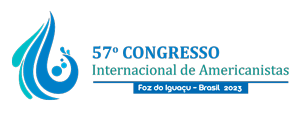| Dados do autor | |
|---|---|
| Nome | Olga Gabelmann |
| E-mail do autor | Email escondido; Javascript é necessário. |
| Sua instituição | Bonn University |
| Sua titulação | Pós-Doutorado |
| País de origem do autor | Alemanha |
| Dados co-autor(es) [Máximo de 2 co-autores] | |
| Email escondido; Javascript é necessário. | |
| Nome completo | Karoline Noack |
| Titulação | Pós-Doutorado |
| País de origem do co-autor | Alemanha |
| Instituição | Bonn University |
| Proposta de Paper | |
| Área Temática | 02. Arqueologia |
| Grupo Temático | Arqueologia Inka |
| Título | Mobilization as a strategy of power and of government: The case of the qollqa in the breadbasket of the Inkas in the Cochabamba valley, Bolivia |
| Resumo | The Inka State (1445-1538 AD) expanded from Cuzco to Bolivia, Chile and Argentina and to Ecuador introducing a statecraft model based principally on the mobilization of numerous population groups across longer and shorter distances. In this sense, the Inca Empire can be conceptualized as a “mobile state” that was to last for only about 100 years. |
| Palavras-chave | |
| Palavras-chave |
|
